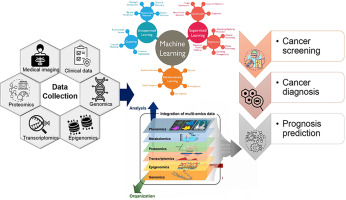
### UCLA Researchers Introduce Innovative Method for Glioblastoma Treatment
Glioblastoma, recognized as one of the most lethal types of brain cancer, has continually posed challenges to scientists and healthcare professionals due to its unmatched capacity for treatment resistance and adaptability to therapies. Nonetheless, cutting-edge findings from UCLA present a beacon of optimism. By merging genetic evaluation with real-time functional monitoring of tumor cells, UCLA researchers have established a groundbreaking method that could transform the treatment landscape for this aggressive illness. This advancement, outlined in a study available in *Nature Communications*, signifies a substantial progress in understanding and addressing glioblastoma.
—
### The Difficulty of Glioblastoma Treatment
Glioblastoma is infamously clever. It is often referred to as a stealthy adversary because it not only adjusts to conventional therapies such as radiation, chemotherapy, or surgical procedures but also develops resistance mechanisms that undermine these treatments. Presently, most therapeutic methodologies depend on the tumor’s genetic makeup—its “blueprint”—to formulate targeted interventions. However, as emphasized by UCLA researchers, relying exclusively on genetic information has its drawbacks.
“Numerous cancer therapies are grounded in the genetic profile of a patient’s tumor,” explains Dr. David Nathanson, senior author and UCLA professor. “Nevertheless, genomic traits alone do not consistently foresee how a tumor will react to a therapy.”
To overcome this challenge, the UCLA team formulated a strategy that merges genetic information with real-time functional assessment—an approach that enables scientists to observe how live glioblastoma cells react to particular treatments.
—
### The Importance of GAVA and Functional Evaluation
At the heart of this novel technique is a machine-learning tool known as GAVA (Genetic and Functional Assessment of Viability Analysis). GAVA not just analyzes the genetic structure of cancer cells but also monitors their behavior through functional profiling. This dual methodology allows the tool to forecast, with impressive precision, how specific treatments might interact with the tumor’s distinct properties.
The researchers utilized a method called BH3 profiling—a functional assessment that gauges how cancer cells respond to therapies aimed at triggering apoptosis (programmed cell death). Glioblastoma tumors are exceedingly skilled at evading this process; however, with BH3 profiling, researchers discovered how treatments affect the tumor’s survival mechanisms and how certain genetic characteristics, such as mutations in the p53 gene, influence these reactions.
—
### A Transformative Drug Combination: ABBV-155
Gaining insight into glioblastoma’s defense strategies paved the way for testing novel treatment methods. Researchers focused their attention on BCL-XL, a protein that is crucial in stopping cancer cells from experiencing apoptosis. Directing efforts at this protein with ABBV-155, an experimental agent, displayed promise in preclinical evaluations.
The outcomes were remarkable: merging conventional treatments like radiation or chemotherapy with ABBV-155 successfully brought about significant tumor reduction in glioblastoma models. Dr. Nathanson noted, “This finding is crucial because tumor reduction is an uncommon result in clinically relevant glioblastoma models. It implies that we might finally have a strategy to overcome this cancer’s well-known resistance.”
—
### Consequences for Tailored Treatment
Co-author Dr. Timothy Cloughesy, a prominent neuro-oncologist at UCLA, emphasized the broader significance of the findings. “The results offer a clear pathway toward the creation of targeted, patient-specific therapies that could greatly enhance the outcomes for individuals diagnosed with glioblastoma,” he states. By customizing treatment plans based on unique tumor attributes—both genetic and functional—doctors may soon design therapies that are considerably more effective and precise.
In essence, this approach could enable physicians to not only predict a tumor’s defensive strategies but also to counter them before they evolve further.
—
### Future Directions
With these encouraging outcomes in hand, the UCLA team is gearing up to move their approach into clinical trials. If successful, the combined therapy—standard treatments alongside ABBV-155—could represent a source of hope for glioblastoma patients, offering new treatment avenues for a disease that has long been deemed unmanageable.
The study’s advancement also highlights the power of interdisciplinary teamwork. By integrating advanced genetics, real-time functional testing, and machine learning, the UCLA team has shown that even the most treatment-resistant cancers can be targeted with creativity and determination.
—
### Glossary of Key Terms
**Glioblastoma:** A highly aggressive form of brain cancer known for its capability to resist therapies and its rapid progression.
**Genetic Profiling:** The assessment of a tumor’s DNA to identify specific mutations or genetic markers that may affect its behavior or treatment response.
**Functional Profiling:** Real-time observation of cancer cells to assess their immediate reactions to various treatments, providing a dynamic layer of insight beyond static genetic data.
**BCL-XL:** A protein that assists cancer cells in evading programmed cell death (apoptosis). Its overexpression in tumors makes it a strategic target for new therapies.
—
### Quiz Time
1. **What